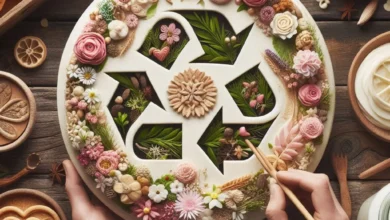Build a Sustainable Wardrobe: A Guide to Eco-Friendly Fashion

From Fast Fashion to Lasting Wear: Building a Sustainable Wardrobe
In today’s world, fashion often feels like a whirlwind of trends, colors, and styles that change faster than the seasons. While it can be tempting to keep up with the latest looks, many of us are beginning to realize the impact of our clothing choices on the environment. Transitioning from fast fashion to a sustainable wardrobe is not only beneficial for the planet but can also enhance your sense of personal style. Let’s explore actionable tips to help you build a wardrobe that’s both stylish and eco-conscious.
Understanding Fast Fashion
Fast fashion refers to the rapid production of inexpensive clothing in response to the latest trends. While it offers affordable options, this model has significant downsides:
- Environmental Damage: The fashion industry is one of the largest polluters in the world, contributing to water pollution, waste, and excessive resource consumption.
- Labor Issues: Many fast fashion brands exploit workers in developing countries, leading to poor working conditions and unfair wages.
- Quality Concerns: Fast fashion items are often made from low-quality materials, resulting in clothes that wear out quickly and contribute to landfill waste.
Why Sustainable Fashion Matters
Building a sustainable wardrobe is not just a trend; it’s a necessary shift towards responsible consumption. Here are some compelling reasons to make the change:
- Environmental Protection: Sustainable fashion reduces waste and pollution, helping to conserve our planet’s resources.
- Ethical Choices: Supporting brands that prioritize fair labor practices ensures that workers are treated with dignity and respect.
- Timeless Style: Investing in quality pieces often leads to a more versatile and enduring wardrobe.
Steps to Create Your Sustainable Wardrobe
1. Assess Your Current Wardrobe
Start by taking a good look at your clothes. This can help you understand what you wear often versus what you rarely touch. Here’s how:
- Declutter: Remove items that no longer fit, are damaged, or simply don’t resonate with your style.
- Sort: Categorize your clothing into keep, donate, and recycle piles. This process can be eye-opening and liberating.
2. Choose Quality Over Quantity
When shopping for new pieces, focus on quality. Here are some tips:
- Fabric Matters: Look for natural fibers like organic cotton, linen, or bamboo, which are more sustainable than synthetic materials.
- Check Construction: Examine the stitching and seams. Well-constructed garments will last longer.
- Invest in Timeless Pieces: Opt for classic styles that won’t go out of fashion quickly.
3. Embrace Second-Hand Shopping
Thrift stores, vintage shops, and online resale platforms are treasure troves for sustainable fashion. Benefits include:
- Unique Finds: Second-hand shopping often yields one-of-a-kind pieces that can add character to your wardrobe.
- Lower Cost: You can find high-quality brands at a fraction of the original price.
- Reduce Waste: By buying used clothes, you’re helping to extend the lifecycle of garments.
4. Support Sustainable Brands
When you do choose to purchase new items, consider brands that prioritize sustainability. Here’s what to look for:
- Transparency: Brands that disclose their production processes and materials are often more trustworthy.
- Certifications: Look for certifications like GOTS (Global Organic Textile Standard) or Fair Trade.
- Local Businesses: Supporting local artisans and businesses can reduce your carbon footprint.
5. Practice Mindful Consumption
Before making a purchase, ask yourself a few questions:
- Will I wear this item at least 30 times?
- Does it fit my personal style?
- Am I buying it just because it’s on sale or trendy?
Mindful consumption encourages you to think critically about your clothing choices, promoting a more sustainable approach.
6. Care for Your Clothes
Extending the life of your garments is crucial. Here are some care tips:
- Washing Wisely: Wash clothes in cold water and air dry when possible to save energy.
- Repair Instead of Replace: Learn basic sewing skills to mend small tears or replace buttons.
- Store Properly: Use padded hangers and avoid overcrowding to maintain the shape of your garments.
Incorporating Sustainable Fashion into Your Life
Transitioning to a sustainable wardrobe is a journey, not a race. Start small, make gradual changes, and allow yourself the grace to learn along the way. Remember, every choice counts, and together we can make a significant impact.
By being intentional about your fashion choices, you’re not just dressing yourself—you’re also making a statement about who you are and what you value. Embrace sustainable fashion as a part of your healthy habits, and enjoy the journey toward a more eco-conscious lifestyle.



